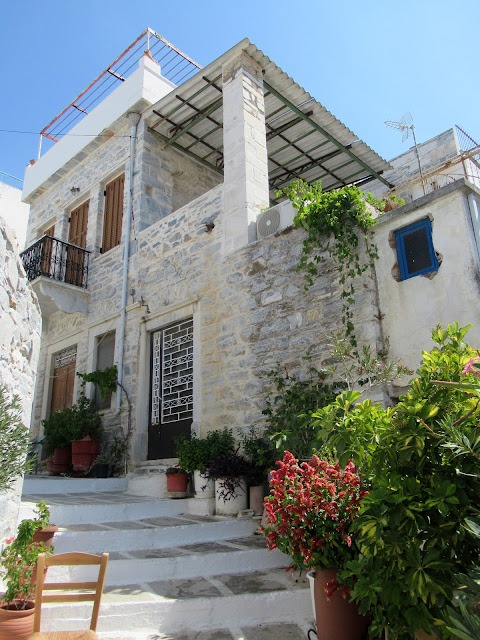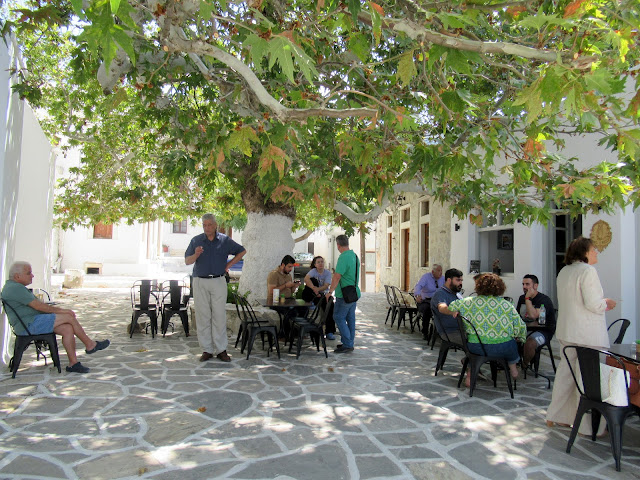The bus dropped us off here, in the middle of the village square which is full of tavernas and cafes.
Filoti is a traditional Cycladic village built amphitheatrically on the slopes of mount Zas, with whitewashed, flat roofed houses and narrow streets. It's situated in the Tragea region of Naxos which is well-known for its olive groves and little Byzantine churches, both of which are also found in the village. Filoti's name is ancient and believed to be of Ionian origin.
Just one huge, imposing plane tree gives shade to a number of cafes and tavernas.
It's all very picturesque
and vibrant
We were steadily walking uphill
nice garden with
a common feature in a lot of houses in Naxos, the arch at the entrance
We had reached a plateau,
The building that stands to this day is not the first one constructed in its place; the very first church recorded here dates back to the Byzantine era, between 1071 to 1204. It was then destroyed n 1544 during a pirate raid. The second structure was completed and officially open to the public in 1718.
The story behind its reconstruction is astonishing and historical books covering it in detail have been written. The Venetian family of Barozzi (see here ) bought the feld in which the ruins of the previous church lay. The feudal lord Barozzi declined the villagers' pleas to give up the field for the reconstruction of the church. The locals defied him and started working on building a new church. After a series of judicial battles between Barozzi and the villagers, the locals were granted permission to complete the church of Panagia Filotitissa.
The reason behind the unexpected outcome was the kindness of a Filoti villager, Stefanos Psarras. Psarras showed compassion to a Turkish child that survived a shipwreck near the Naxian coast - he fostered the child until his 18th birthday, when the child returned to Istanbul, becoming the Ottoman Empire's top judicial figure. He was in charge of the church's reconstruction trial and he returned the kidness that was shown to him by Psarras and the villagers.
The triple tower is exquisitely carved: in the central column, Psarras is depicted with the Virgin Mary who holds infant Jesus next to him; depictions of holy figures, flora, fauna and local beneficiaries' names are carved on the marble of the other two columns.
the plane tree at its centre providing shade
We sat in the square and had a light lunch.
We then had a quick look at the Ecclesiastical Folklore museum which is next to the church.






















































No comments:
Post a Comment